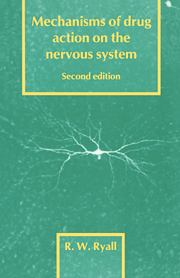Summary
In this chapter only some of the techniques which can be employed to investigate the action of drugs upon the nervous system and the process of synaptic transmission will be examined. There is no space in a book of this size to describe the many techniques in detail and no attempt is made to discuss behavioural techniques which are frequently employed in the evaluation of drugs acting on the central nervous system. The emphasis will be on the more recent developments in technology.
Many of the techniques are common to studies of the peripheral or central nervous system. However, special techniques are required to overcome the problems associated with the access of drugs to the brain and the determination of the site of action. Since the first edition of this book was written, there have been a number of advances in the development of in vitro techniques for examining the properties of slices of brain tissue (brain slice techniques) and for maintaining cultures of neuronal tissue. These have enabled us to bypass the problems associated with the access of drugs to the brain although they have introduced some additional problems of their own. There have also been advances in electrophysiological techniques for examining the properties of single ion channels in isolated segments of cell membranes in vitro. It is likely that future major progress will accrue from the development of the techniques to the point when they can be applied to intact, functioning tissues. In other disciplines there have been advances in techniques for visualising receptors and enzymes and in synthetic methods for determining the structure of complex molecules.
- Type
- Chapter
- Information
- Mechanisms of Drug Action on the Nervous System , pp. 7 - 13Publisher: Cambridge University PressPrint publication year: 1989

